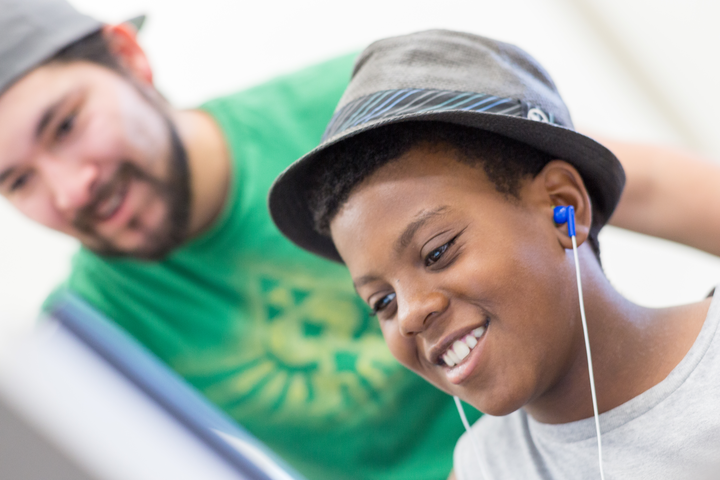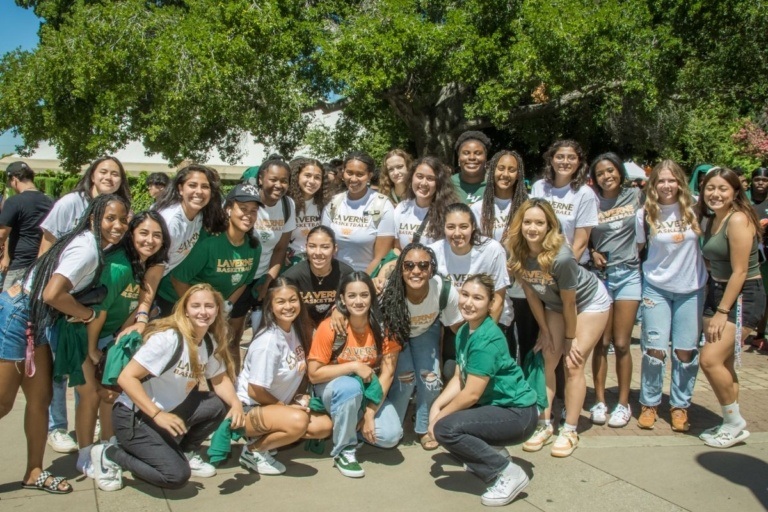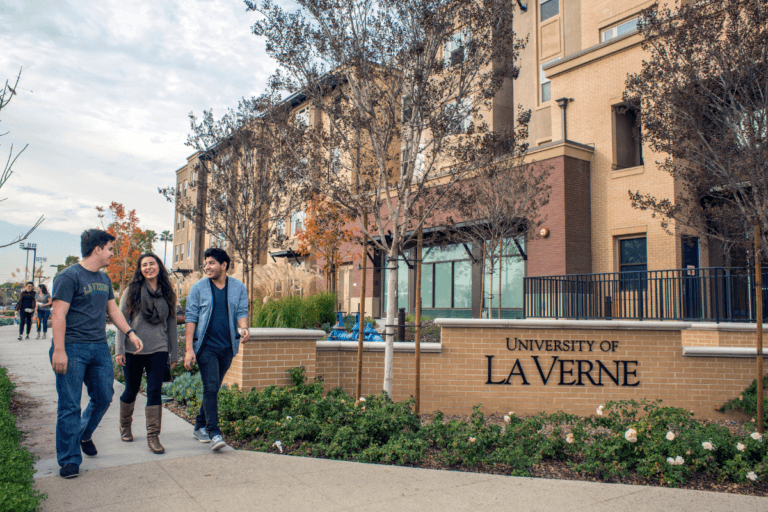University of La Verne Helps Middle-School STEAM:CODERS Build Computer Skills

It was a Saturday morning in March and the kids were glued to their screens looking at cartoons. So what else is new?
Actually, everything.
These weren’t just any kids. They were 16 middle-school “STEAM:CODERS” hard at work in University of La Verne’s Founders Hall. And they weren’t just watching old cartoons, they were building their own animation with help from volunteer computer science majors.
Tossing around terms like “Parameters,” “Global or Local Variables,” “Strings,” and “Binary Codes,” and reeling off programming languages like “Scratch,” “Sublime,” “Javascript,” and “Ruby,” the 10-13 year olds tackled the class like pros.
“These kids are crazy smart!” said instructor Rekieya Ward, whose credentials include an industrial engineering degree from USC and a full-time position with Oracle.
STEAM:CODERS is the brainchild of Raymond Ealy, a former banker with a passion for creating STEAM opportunities – science, technology, engineering, art, and math — for underserved young people. In July 2014, Ealy started the STEAM:CODERS with a series of one-day workshops at Polytechnic School in Pasadena. Later that fall, the first eight-week class began Pasadena’s La Salle High School.
He and his wife and collaborator, Charmayne, soon established partnerships with Harvey Mudd College, Pasadena City College, Caltech and others, who offered the use of their computer labs.
University of La Verne hosted its first set of classes in fall of 2016 and is halfway through the second series this spring, welcoming middle-schoolers from Pomona Unified and surrounding districts.
STEAM:CODERS, whose motto is “Opportunity + Imagination = Innovation” is funded by foundation and individual donors as well as small fees from the school districts served, including Pasadena, Inglewood, and Long Beach.
Ealy’s goal is clear, “I want to provide our students with access to STEAM careers –particularly students of color.”
The STEAM fields have been historically dominated by white males, and even the introduction of arts as integral to STEM learning — thus STEAM – has yet to entice equal numbers of women, African-American, or Latino students.
Over 2,100 students from lower income districts around the Southland have taken part in STEAM:CODERS and the demand from districts continues to grow. The curriculum includes classes not only in animation, but also coding, graphic and web design, music, and robotics. The kids also get field trips provided by corporate partners to places like California Science Center, Google LA, Warner Bros., and Apple Stores, where they can see STEAM skills at work up close.
But, said Ealy, that’s not all.
“STEAM:CODERS classes teach logic, critical thinking, and problem solving,” he said. “They also help build students’ confidence with public speaking since they have to present to their classmates.”
With nearly a half-dozen college and university partners, Ealy’s other motivation is clear.
“When these students and their parents come to the classes on a college campus it gives them an introduction to the college environment,” he said. “For first-generation students, this is critical. They may not be conscious of the fact, but this is the first official college tour for students and most of the parents, too.“
At the University of La Verne, computer science undergraduates Arnold Mejia, Ruben Viera, Edwin Escobar, Alondra Olvera, and Andrew Trulin are providing support for instructor Ward.
On March 18, Viera worked the room with a giant smile, helping, encouraging, questioning.
“Hold on,” he called out to one eager 12-year-old waving his hand wildly, “there’s only one of me.”
“Lots of these kids don’t have these resources in school,” said Escobar,” so I know how much it means to them. They are really focused.”
“One group of boys blew my mind,” exclaimed Olvera. “Their creativity is so cool!”
So do these budding computer animators want to become web technology professionals?
“Not really,” said 10-year-old Valeria Gonzalez. “It’s really fun, but I want to be a doctor.”
There are several other aspiring doctors in the class, including Nigel Kabiro, 10, and his 13-year-old sister Symah. Alberto Torres, 12, has his heart set on being a dentist. Clearly Ealy’s goal of STEAM access and enthusiasm is paying off.
For Alan Contreras, 11, “It’s a good way to spend a Saturday. You’re using electronics but in a good way.” He wants to study to be an engineer.
“It’s exciting. Computer science is fascinating,” he said.
For these young students, it is clearly full STEAM ahead.


